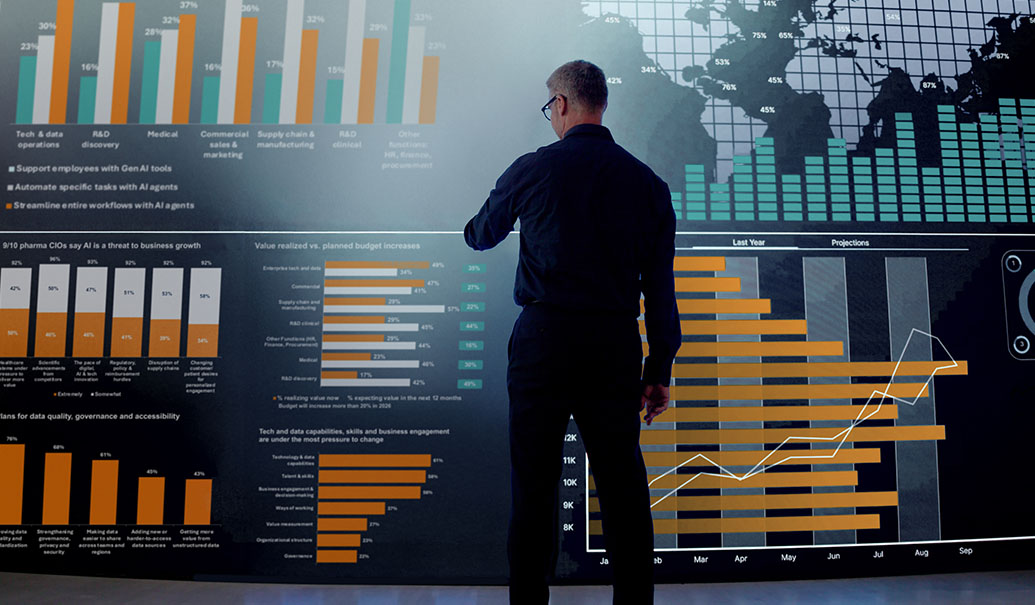Data lakes solved the problem of bringing vast amounts of data together and unlocking extensive value; however, they left us struggling to make connections and relationships within the data. Without knowledge graphs to bridge the gap, business analysts and data scientists face hurdles. By tech standards, this solution has been around for a while. (2018 was known as the “Year of the Graph.”) Today, graph technologies are beginning to enable unique solutions that create significant business value and it’s leading to greater adoption beyond the Silicon Valley set. In fact, according to Gartner, graph technologies will facilitate rapid contextualization for decision making in 30% of organizations worldwide by 2023. Thus far, however, it remains largely untapped by life sciences companies.
To dive deeper into the value of knowledge graphs for life sciences, we sat down with Sandeep Varma and Ajay Ramkrishnan, principal and solution delivery manager at ZS, respectively, as well as Rob Harris, vice president of product management for Stardog, an enterprise knowledge graph platform company.
Q: Are organizations taking a leap of faith by investing in graph technologies?
Sandeep Varma: Graph technologies have been around for years. In fact, large tech companies like Google are using knowledge graphs in their search interface to provide users contextual information that is relevant to their searches. Even in the world of e-commerce, eBay is using the technology and past user behavior to drive its chatbot conversations. UberEats uses it to power search recommendations.
Q: If this technology has been around for years, why haven’t life sciences companies invested in it?
SV: Traditionally, data and analytics stay in siloes in most organizations. For the last few years, life sciences companies have focused on bringing in data from various sources across functional areas and building enterprise data lakes. The nature of data has also changed with increasing amounts of unstructured data being ingested by companies. To truly realize the benefits of their investments, companies still need to do three things: make data discoverable to their users in a comprehensive way, enable users to seamlessly link datasets across different functions, and adopt industry-recognized standards for interoperability.
Graph technologies coupled with semantic technologies can help power a sophisticated user experience. You can build conversational interfaces, semantic search solutions and intuitive navigation to improve the user experience in complex, interconnected data. For example, graph technology can help build a true 360-degree view of key business entities. An HCP 360 could combine sales, marketing, access, social media, publications and trial participation in one view to allow better segmentation, hyper-personalized touchpoints, key opinion leaders and more.
Q: What happens if I don’t invest in graph technologies now?
SV: We regularly see life sciences companies struggle with so many issues that graph technologies could help address. Data catalog tools aren’t addressing the needs of business users. They can’t find the data they need in the catalog without getting technical help. They have no way to analyze unstructured datasets like clinical trial information, medical articles, market research reports, medical transcripts, audio, video and images. They have data scientists and analysts creating models and analyses across functions, but there’s no way for anyone to know what analyses exist, what datasets have been used, what features have been created, etc. They keep reinventing the wheel and it’s slowing them down.
Given the business challenges and competitive pressures that life sciences companies face today, the cost of delays and impediments to getting business insights quickly from data is higher than ever. Not investing now means struggling with these problems even longer, costing you precious time, money and potentially your business.
Q: How can I leverage my existing investments?
Ajay Ramkrishnan: Knowledge graphs are a powerful way to combine structured and unstructured data and link them with business concepts. In life sciences, most ontologies and data standards are defined using a graph model that can integrate seamlessly with graph technologies.
Rob Harris: Knowledge graphs can connect data of any type from any location and semantically enrich it with relevant business context. They leverage, rather than replace, existing IT infrastructure. They sit atop existing assets and form a flexible, reusable, dynamic layer for data delivery.
Q: What are some unique ways that life sciences companies are using knowledge graphs?
RH: In the realm of drug discovery, a knowledge-graph-enabled data fabric can provide scientists and analysts with a one-stop shop for R&D data that they need to identify. It can help validate drug targets and advance new drugs to clinical trial. On the scientific side, knowledge graphs have a transformative impact in the pharmaceutical industry, and for regulatory analysts, they can automate parts of the submission process to ensure continued compliance. Across the board, knowledge graphs serve as a critical tool in attaining patient-centricity and implementing fair data.
AR: These are great examples. We’re also seeing companies use graph technologies for interesting use cases such as data discovery, metadata management, recommendation engines, affiliation management, NLP-driven insights from unstructured data such as clinical trial articles, physician interviews and more.
In general, life sciences companies are increasingly interested in leveraging knowledge graphs to enable rapid data discovery and insight generation. Most companies are trying to solve the same problem: how to harness data and use it in a meaningful way. Through investments in R&D of graph assets and accelerators, companies are rapidly implementing robust graph-based solutions to solve complex data problems. Knowledge graph technologies are indeed the future for enabling data-driven insights.
Add insights to your inbox
We’ll send you content you’ll want to read – and put to use.













